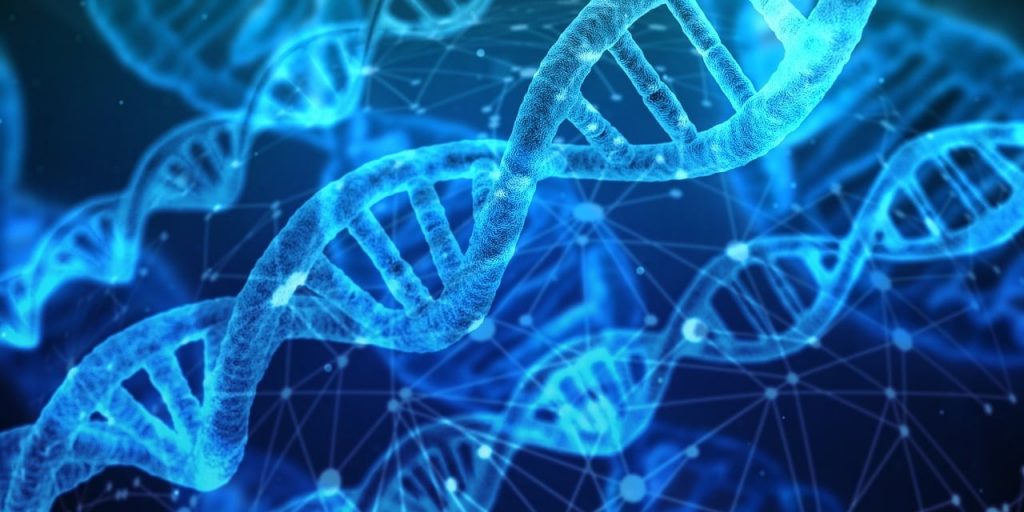ERBB2, has demonstrated its significance on various occasions in the field of oncology, paving the way for targeted therapies which have revolutionised cancer treatment. In this article, I will briefly describe the landscape of HER2 alterations, its prevalence in various tumour types as well as challenges and future opportunities related to molecular approaches used to assess HER2 status.
Her2 gene was first described in mid-80s (1) and is a member of the epidermal growth factor receptor (EGFR) family, which also includes EGFR (HER1), HER3, and HER4 receptors. Today, according to ASCO/CAP (2) and ESMO (3) recommendations, all newly diagnosed patients with breast cancer should be tested for HER2 overexpression and amplifications. The patients who progress and develop metastatic disease are again tested for HER2 if tissue is available. Initially, patients who were HER2-negative typically would not receive HER2-targeting therapy. However, now it is known that some breast cancer patients may carry Her2 somatic mutations, most of which are not associated with HER2 overexpression nor amplification and are potentially suitable candidates for HER2-targeted therapy. However, other studies have suggested that some of these somatic Her2 mutations may emerge as a resistance mechanism to initially used targeted therapies, suggesting that Her2 mutations still represent an area in need of further research (4).
As the disease progresses, it is important to re-evaluate the HER2 status, especially since events such as clonal evolution and receptor conversion may occur and can impact therapeutic decision making. Some initial data has shown promising results, in the patients who were HER2-negative in primary breast lesions, and who then subsequently converted to HER2-positive, making them suitable for HER2-targeting therapy (5). Larger trials are still needed to demonstrate the clinical utility of HER2-targeted therapies in this context.
However, assessing HER2 status using repeated sampling during the disease progression and in a metastatic setting might not always be feasible. The site of lesion might make it difficult to do a new biopsy (e.g. bone metastasis) and patients may not be in conditions to undergo another biopsy. In this context, non-invasive approaches such as liquid biopsy testing are very attractive and are currently being investigated in research settings.
Prevalence of HER2 alterations across cancer types
In regards to its prevalence, HER2 is found to be overexpressed in 15-20% of primary breast cancers and approximately 10% of ER-positive breast cancers. The overexpression of HER2 occurs predominantly through amplification of the HER2 gene and is associated with a more aggressive phenotype with poor prognosis (6). As mentioned earlier, point mutations on the other hand, are fairly rare in breast cancer and affect approximately between 2-5% of patients.
In the past, breast cancer patients having HER2 amplifications did not have good outcomes, and this was dramatically improved with the launch of a first monoclonal antibody called trastuzumab (also known as Herceptin). The development of trastuzumab and other monoclonal antibodies with similar activities have transformed HER2-positive early-stage breast cancer patients into one of the breast cancer groups with excellent survival rates (above 90%, when treated with chemotherapy in combination with dual antibody therapy (7)).
During recent years, the presence of HER2 alterations has been described in a variety of cancer types such as bladder, cervix, colon, endometrium, germ cell, glioblastoma, head and neck, liver, lung, ovarian, pancreas, and salivary duct cancers (8). For instance, colorectal cancer (CRC) and non-small cell lung cancer (NSCLC) patients, have distribution of HER2 alterations of 7-8% abd 7-27%, respectively. In addition, the landscape analysis of HER2 alterations on the multi-omics TCGA (The Cancer Genome Atlas) dataset concluded that HER2 alterations were found to be present across 33 tumor types, highlighting its pan-cancer relevance (9). This study developed an expression-based HER2 index, based on the transcriptome data, which successfully differentiated the HER2-enriched subtypes from others, thereby identifying suitable candidates for HER2-targeted therapies.
Methods for evaluation of HER2 status
HER2 protein overexpression is assessed using immunohistochemistry (IHC) and by fluorescence in situ hybridization (FISH). IHC involves tumour tissue staining with specific antibodies that bind to HER2 protein. The intensity of staining, its distribution and the percentage of positive cells are examined under a microscope and used to generate an IHC score. The IHC scores range from 0 to 3+, where 0 and 1+ are evaluated as HER2-negative, 2+ score is called borderline or equivocal and it requires further testing, while 3+ is HER2-positive and therefore eligible for HER2-targeted therapy. FISH assays use fluorescently labelled DNA probes which bind specifically to HER2 and another control gene, and you measure the ratio between these two.
Mutational status of Her2 is usually assessed using next-generation sequencing (NGS) and recently, FDA has approved the first NGS-based companion diagnostic (CDx) for assessing mutations in Her2, enabling identification of NSCLC patients who are eligible for treatment with HER2-targeting therapy (10).
Evolution of HER2-targeting therapies
Since the introduction of Herceptin, several other HER2-targeting drugs have been launched using similar mechanisms of action. As the tumour progresses in some patients and leads to metastasis on some occasions, it has been observed that some patients become resistant to these initial therapies. This has led to the development of new types of drugs called antibody-drug conjugates (ADCs) (Table 1), which have a very sophisticated way to introduce chemotherapy only into cancer cells while spearing healthy ones and thereby reducing systemic toxicities.

Table 1.
One of these ADCs is trastuzumab deruxtecan which has led to positive outcomes, not only in HER2-positive metastatic breast cancer patients (11) but also HER2-mutatied NSCLC (12). The preliminary results from a first tumor agnostic trial, DESTINY-PanTumour01 was presented at 2023 ESMO conference. Data showed encouraging data for trastuzumab deruxtecan on objective response rate, particularly in heavily pretreated patients who had IHC 3+ score and HER2-expressing solid tumors (13).
Importantly and additionally, trastuzumab deruxtecan resulted in being very effective in treating HER2-low patients, classified as IHC 1 + / 2 + and FISH-non amplified results. The results from DESTINY-Breast04 trial, which caused standing ovations during ASCO 2022, showed that trastuzumab deruxtecan improved significantly both progression-free survival (PFS) and overall survival (OS) when compared to patients treated by chemotherapy only (14). This was particularly important since historically, “classical” HER2-targeting therapies have been ineffective in this patient population. HER2-low breast cancer patients represent up to 60% of HER2-negative breast cancer patients, which vary in prognosis and response to systemic therapy (15). These recent results suggested that HER2-negative patients might benefit from redefinition of this subtype, which is one of the objectives of the DESTINY-Breast06 trial, which aims to explore whether there might be a HER2-ultra-low subgroup who could also benefit from this ADC.
Future of HER2 evaluation
From the data described above we can conclude that distinguishing between HER2-Low and HER2-negative breast cancers is crucial for treatment decision-making. Recently, an expert ESMO group has published a consensus paper on definition, diagnosis and management of HER2-low breast cancer patients (16), since as described above, this differentiation can have significant implications for patient outcomes and the selection of appropriate therapeutic strategies. The ASCO/CAP has also developed a set of recommendations for testing of HER2, with the goal to ensure accuracy and reproducibility across different laboratories (2). It is also recommended that HER2 testing laboratories participate in external quality schemes in order to ensure continuous, and optimal performance of the labs. The ESMO expert group also suggests that centralised testing for HER2-low should be considered in order to ensure consistent findings from the clinical trials. The expert group referred to studies which have highlighted significant discrepancies between HER2 0+ and HER2 1+ status amongst pathologists (17).
With this in mind, it will be imperative to establish robust guidelines and drive standardisation efforts to ensure consistent interpretation and proper management of these cases. Recently published data at ESMO 2023 from the DESTINY-PanTumour02 trial has also shown that agreement between centralised and local HER2 IHC testing scores is moderate (59% of agreement for IHC 3+ and 55% for IHC 2+) (18).
Conclusion
The emerging importance of the HER2 biomarker across various cancer types presents exciting opportunities for personalised medicine and targeted therapies. Advancements in HER2-targeted treatments, expanded applications of HER2 testing and novel methods for HER2 status evaluation demonstrate the speed at which the clinical landscape is evolving. Challenges regarding the reproducibility of HER2 testing, including IHC findings, persist and standardisation efforts to address these challenges and ensure consistent and reliable HER2 testing across different laboratories and institutions are essential. Non-invasive liquid biopsy testing has shown promising data from the clinical validity perspective, but clinical utility data demonstrating impact on patients’ outcomes is still needed.
1. Schechter AL et al. The neu oncogene: an erb-B-related gene encoding a 185,000-Mr tumour antigen. Nature 312, 513–516 (1984).
2. Wolff AC, et al. American Society of Clinical Oncology; College of American Pathologists. Recommendations for human epidermal growth factor receptor 2 testing in breast cancer: American Society of Clinical Oncology/College of American Pathologists clinical practice guideline update. J Clin Oncol. 2013 Nov 1;31(31):3997-4013.
3. Cardoso F et al. Early breast cancer: ESMO Clinical Practice Guidelines for diagnosis, treatment and follow-up. Ann Oncol. 2019 Aug 1;30(8):1194-1220.
4. Gaibar M, et al. Somatic Mutations in HER2 and Implications for Current Treatment Paradigms in HER2-Positive Breast Cancer. J Oncol. 2020 Mar 7;2020:6375956.
5. Zhao W, et al. Receptor conversion impacts outcomes of different molecular subtypes of primary breast cancer. Ther Adv Med Oncol. 2021 May 6;13:17588359211012982.
6. Slamon DJ et al. Human breast cancer: correlation of relapse and survival with amplification of the HER-2/neu oncogene. Science235, 177–182 (1987).
7. von Minckwitz G et al. Adjuvant pertuzumab and trastuzumab in early HER2-positive breast cancer. N. Engl. J. Med. 377, 122–131 (2017).
8. Yan M, et al. HER2 aberrations in cancer: implications for therapy. Cancer Treat Rev. 2014 Jul;40(6):770-80.
9. Li Z, et al. A pan-cancer analysis of HER2 index revealed transcriptional pattern for precise selection of HER2-targeted therapy. EBioMedicine. 2020 Dec;62:103074.
11. Nakada T, et al. The Latest Research and Development into the Antibody-Drug Conjugate, [fam-] Trastuzumab Deruxtecan (DS-8201a), for HER2 Cancer Therapy. Chem Pharm Bull (Tokyo). 2019;67(3):173-185.
12. Li BT, et al. DESTINY-Lung01 Trial Investigators. Trastuzumab Deruxtecan in HER2-Mutant Non-Small-Cell Lung Cancer. N Engl J Med. 2022 Jan 20;386(3):241-251.
13. Meric-Bernstam F. et al. Efficacy and safety of trastuzumab deruxtecan (T-DXd) in patients (pts) with HER2-expressing solid tumors: DESTINY-PanTumor02 (DP-02) interim results. Journal of Clinical Oncology 2023 41:17_suppl, LBA3000
14. Modi S, et al. DESTINY-Breast04 Trial Investigators. Trastuzumab Deruxtecan in Previously Treated HER2-Low Advanced Breast Cancer. N Engl J Med. 2022 Jul 7;387(1):9-20.
15. Tarantino P, et al. HER2-low breast cancer: pathological and clinical landscape. J Clin Oncol 2020;38:1951-1962.
16. Tarantino P, et al. ESMO expert consensus statements (ECS) on the definition, diagnosis, and management of HER2-low breast cancer. Ann Oncol. 2023 Aug;34(8):645-659.
17. Robbins CJ, et al. Multi-institutional Assessment of Pathologist Scoring HER2 Immunohistochemistry. Mod Pathol. 2023 Jan;36(1):100032.
18. V. Makker et al. 148P DESTINY-PanTumor02 study of trastuzumab deruxtecan (T-DXd) in patients (pts) with HER2-expressing solid tumors: Exploratory biomarker analyses of HER2 expression and gene amplification in tissue and plasma. Abstract | Volume 34, Supplemt 2, S239-S240, Ocotber 2023.
Disclaimer: The information in this blog is not intended or implied to be a substitute for professional medical advice, diagnosis or treatment. All content available here is for general information purposes only.





